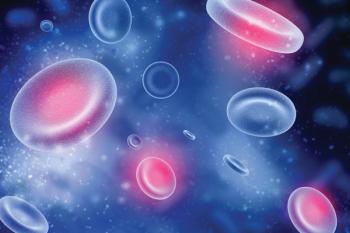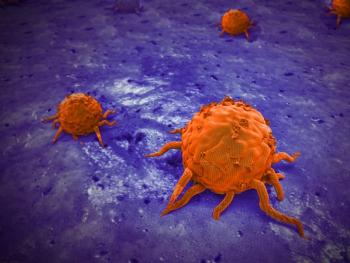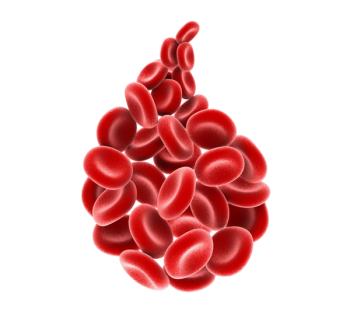
Tolerable Phase 2 Dose of Mobocertinib in Japanese Patients With NSCLC Consistent With Global Maximum-Tolerated Dose
Results of a phase 1/2 trial revealed the recommended phase 2 and maximum-tolerated dose of mobocertinib in Japanese patients with non–small cell lung cancer.
Dose-escalation of mobocertinib (Exkivity) in a phase 1/2 trial (NCT03807778) that enrolled Japanese patients with non–small cell lung cancer (NSCLC) led to the determination of 160 mg as the maximum-tolerated dose (MTD) and recommended phase 2 dose for further study in this population based on a manageable safety profile, according to findings presented in a poster during the
“Mobocertinib 160 mg [once daily] was confirmed to be tolerable in Japanese patients with
NSCLC. In this study, no new safety signals for mobocertinib were observed. The pharmacokinetics of mobocertinib and its two active metabolites were characterized in Japanese patients with NSCLC, supporting the once-daily dosing regimen,” lead study author Toyoaki Hida, MD, PhD, of the Department of Thoracic Oncology at Aichi Cancer Center, in Aichi, Japan, and coauthors, wrote in the poster.
Mobocertinib is a potent, oral EGFR TKI, with activity against in-frame insertions in exon 20, which are associated with poor survival.
On September 15, 2021, the
The present study included patients with histologically or cytologically confirmed locally advanced or metastatic NSCLC refractory to standard treatments.
In the dose-escalation cohorts, patients were started on 40 mg once daily followed by higher doses according to an adapative Bayesian logistic regression model until a MTD was found or 160 mg once daily was shown to be safe and tolerable.
The MTD was reached when at least 9 patients at all doses were evaluable for dose-limiting toxicity (DLT), at least 6 patients at the current dose level were evaluable for DLT, and the next recommended dose was equivalent to the current dose.
Twenty patients were enrolled at 4 sites into the 40-mg (n = 4), 120-mg (n = 4), and 160-mg (n = 12) cohorts.
The median patient age was 61 years, and most patients were female (70%). Eighteen patients (90%) had an EGFR exon 20 insertion mutation. All patients had received at least 1 prior anticancer therapy, and 55% had received at least 3 lines of treatment.
All but 1 patient had received prior platinum-based chemotherapy; 1 patient had received gefitinib (Iressa) and an unspecified investigational drug.
The median duration of mobocertinib exposure was 3.45 months (range, 0.4-10.1). The median dose intensity was 119.3 mg/day (range, 40-160), and the median relative dose intensity was 94.4%.
No DLT was observed at the 40-mg dose. One patient who received the 120-mg dose experienced a DLT of grade 3 diarrhea, and 2 patients receiving the 160-mg dose experienced DLTs of grade 3 interstitial lung disease (ILD) and grade 2 aspartate aminotransferase increase, grade 3 alanine aminotransferase (ALT) increase, and grade 2 diarrhea.
All patients in the 160-mg cohort experienced a treatment-emergent adverse effect (TEAE). The most common TEAE was diarrhea, which was recorded in all but 1 patient receiving the 40-mg dose, and nausea, which was recorded in half of all patients in each cohort.
Regarding diarrhea, the median time to onset was 3 to 4 days, was categorized as grade 2 or less, and was manageable with concomitant loperamide with no need for dose modification.
Grade 3 or greater TEAEs only occurred in the 120-mg and 160-mg cohorts and included diarrhea (n = 1; 25%), lymphocyte count decrease (n = 1; 25%), dehydration (n = 1; 25%), depressed level of consciousness (n = 1; 25%), and embolism (n = 1; 25%) vs pneumonia (n = 1; 8%), ILD (n = 1; 8%), ALT increase (n = 1; 8%), neutrophil count decrease (n = 1; 8%), white blood cell count decrease (n = 1; 8%), and decreased appetite (n = 1; 8%), respectively.
One patient in the 120-mg cohort died; the death was attributed to underlying disease.
With regard to efficacy, the investigator-assessed objective response rate was 25.0% (n = 1; 95% CI, 0.63%-80.59%) in the 120-mg cohort vs 16.7% (n = 2; 95% CI, 2.09%-48.41%) in the 160-mg cohort. All 3 patients with an objective response had an EGFR exon 20 insertion mutation.
The investigator-assessed disease control rate was 50%, 75%, and 75% in the 40-mg, 120-mg, and 160-mg cohorts, respectively.
Additional pharmacokinetic analysis demonstrated that mobocertinib was absorbed with a median time to maximum concentration (Tmax) of approximately 4 hours on cycle 1, day 1 and cycle 2, day 1.
The daily dosing schedule was supported by the approximated effective half-life of 9 to 13 hours. Additionally, mild mobocertinib accumulation of less than 1.3 was seen following several doses.
References
- Hida T, Nishio M, Yoh K, et al. A phase I dose-escalation study of mobocertinib (TAK-788), an oral tyrosine kinase inhibitor, in Japanese NSCLC patients. Presented at: 2021 ESMO Congress; September 16-21, 2021; virtual. Abstract 1246P
- Takeda’s EXKIVITY (mobocertinib) approved by US FDA as the first oral therapy specifically designed for patients with EGFR exon20 insertion+ NSCLC. News release. Takeda Pharmaceutical Company. September 15, 2021. Accessed September 16, 2021. https://bit.ly/2Xm3WSY
Newsletter
Stay up to date on recent advances in the multidisciplinary approach to cancer.


















































































